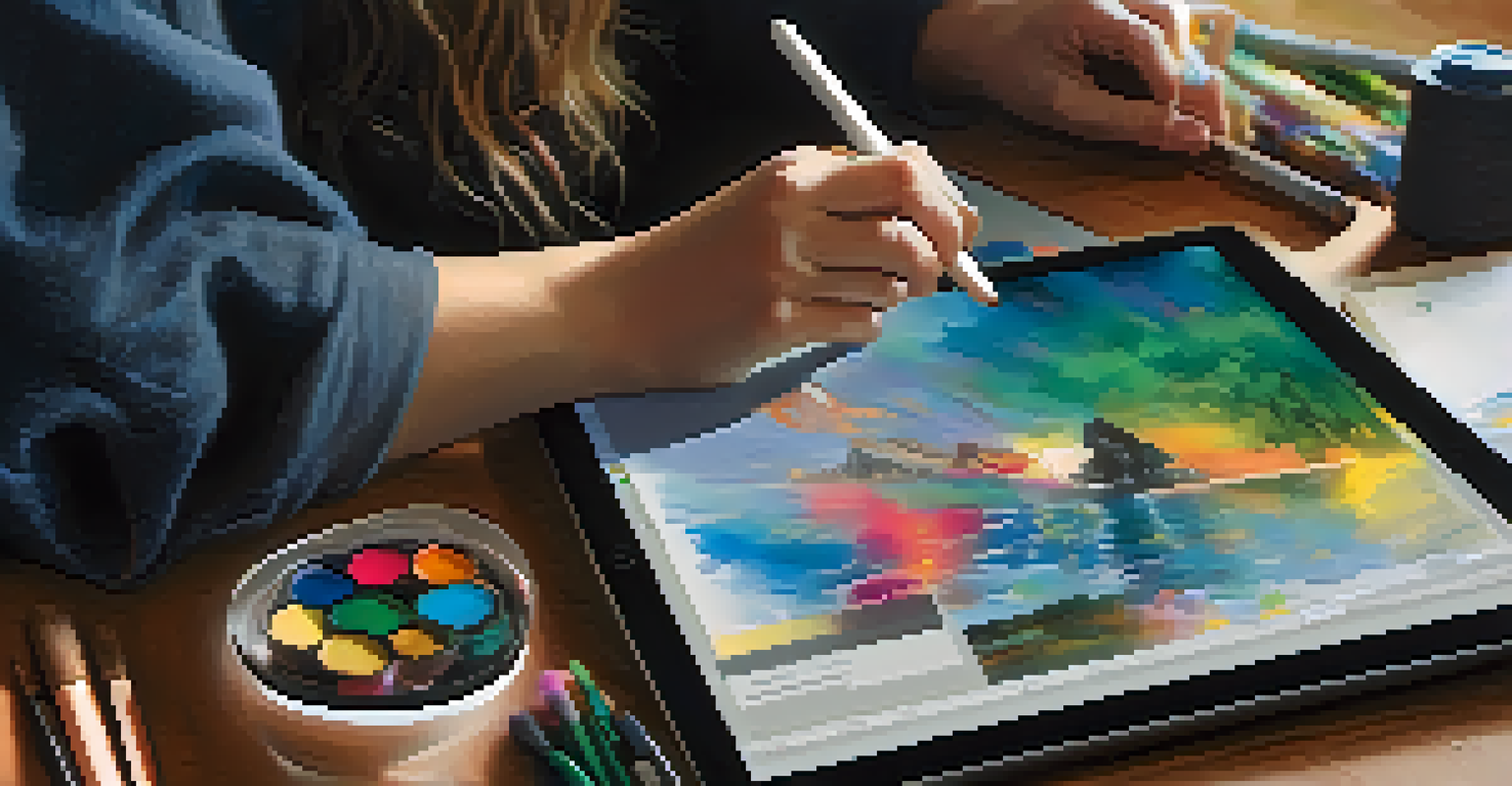The Role of Art Education in Developing Creativity Skills

Understanding Creativity and Its Importance
Creativity is often seen as the ability to think outside the box, but it goes much deeper. It's about problem-solving, innovation, and expressing one's thoughts and feelings uniquely. In today's fast-paced world, fostering creativity is crucial for personal and professional success, as it helps individuals adapt and thrive in various situations.
Creativity is intelligence having fun.
Art education plays a significant role in nurturing these creative skills. By engaging with different forms of art, students learn to explore their imagination, take risks, and approach challenges with an open mind. This exploration not only enhances their artistic abilities but also equips them with skills applicable in all areas of life.
Related Resource
Moreover, creativity is not just for artists; it's a vital skill across professions. Whether you're a scientist, teacher, or entrepreneur, the ability to think creatively can lead to innovative solutions and new ideas, making creativity an essential component of modern education.
Art Education: A Foundation for Creative Thinking
Art education provides a structured environment where students can experiment with ideas and techniques. Through various mediums, such as painting, sculpture, and digital art, learners are encouraged to express themselves and explore new concepts. This hands-on experience is fundamental in developing critical thinking skills.

As students create, they often face obstacles that require them to rethink their approaches. For example, if a painting isn’t turning out as expected, students must evaluate their methods and make adjustments. This iterative process of trial and error is a key aspect of creative thinking and problem-solving.
Creativity Fuels Success
Fostering creativity is essential for personal and professional growth, enabling individuals to adapt and thrive in diverse situations.
Furthermore, art education promotes an understanding of perspective. By studying different artists and styles, students learn to appreciate various viewpoints, which enhances their ability to think critically and creatively about the world around them.
Encouraging Emotional Expression Through Art
Art is a powerful medium for emotional expression, allowing students to convey their feelings in ways that words often cannot. When students engage in artistic activities, they can communicate complex emotions, fostering a deeper understanding of themselves and their experiences. This emotional connection is vital for developing creativity, as it encourages authenticity in their work.
Every artist was first an amateur.
For instance, a student might create a piece of art reflecting their struggles with anxiety. Through this process, they not only express their emotions but also gain insights into their feelings, which can lead to personal growth. Such experiences highlight the therapeutic aspects of art education, contributing to overall well-being.
Related Resource
Moreover, this emotional engagement can inspire innovative ideas. When students tap into their feelings, they often discover unique perspectives that can translate into creative solutions in their academic and personal lives.
The Role of Collaboration in Art Education
Collaboration is an essential component of art education, providing students with opportunities to work together on projects. This teamwork not only fosters a sense of community but also encourages the sharing of diverse ideas and perspectives. When students collaborate, they learn to respect and incorporate different viewpoints, enhancing their creative process.
For example, in a group mural project, each student may contribute their unique style and ideas. This collaboration not only results in a beautiful piece of art but also teaches students about compromise and the importance of collective creativity. Such experiences are invaluable in preparing students for real-world scenarios where teamwork is often crucial.
Art Education Boosts Critical Thinking
Engaging in art education enhances critical thinking skills by encouraging students to analyze their work and embrace constructive feedback.
Additionally, collaborating with peers can spark inspiration and motivate students to think outside their own artistic boundaries. This exchange of ideas often leads to innovative solutions and new ways of approaching creative challenges.
Art Education and Critical Thinking Skills
Engaging in art education sharpens critical thinking skills, as students are often required to analyze and evaluate their work. This process involves making decisions about composition, color, and technique, encouraging them to think deeply about their choices. Such reflective practices are essential in developing a well-rounded creative skill set.
For instance, when critiquing their own art or that of their peers, students learn to articulate their thoughts and provide constructive feedback. This practice not only enhances their analytical skills but also cultivates a growth mindset, essential for creative development.
Related Resource
Moreover, the ability to critically assess their work allows students to embrace failure as a learning opportunity. This resilience is key in any creative endeavor, as it empowers them to push boundaries and explore new ideas without fear of making mistakes.
Integrating Technology in Art Education
In today's digital age, technology plays a significant role in art education, providing students with new tools to express their creativity. From digital painting to graphic design, technology opens up endless possibilities for artistic exploration. This integration of technology not only enhances students' artistic skills but also prepares them for future careers in creative industries.
For example, students can use software to create animations, giving them a platform to combine storytelling with visual art. This fusion not only enhances their technical skills but also encourages them to think creatively about how to convey messages through different mediums.
Collaboration Sparks Innovation
Collaborative projects in art education promote the sharing of diverse ideas, inspiring students to think creatively and develop innovative solutions.
Furthermore, technology allows for greater collaboration across distances. Students can share their work online, receive feedback from peers around the world, and even participate in virtual art exhibitions, expanding their creative horizons beyond the classroom.
The Long-Term Benefits of Art Education
The benefits of art education extend far beyond the classroom, influencing various aspects of students' lives. Research shows that individuals who engage in creative activities tend to be more adaptable and resilient, traits that are essential in a rapidly changing world. These skills are not only beneficial in artistic fields but are also highly valued in many professional settings.
Moreover, art education can enhance cognitive skills, improving memory and attention. Engaging in artistic activities stimulates the brain, fostering neural connections that contribute to overall cognitive development. This mental agility can translate to improved performance in academic subjects as well.

Ultimately, art education cultivates a lifelong appreciation for creativity. Students who engage in the arts are more likely to continue exploring their creative passions, leading to enriched personal lives and potentially fulfilling careers in the arts or creative industries.